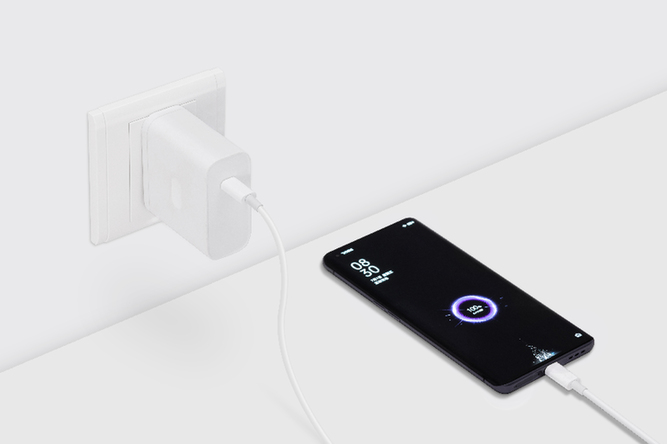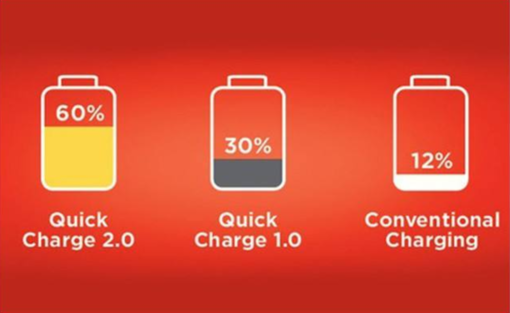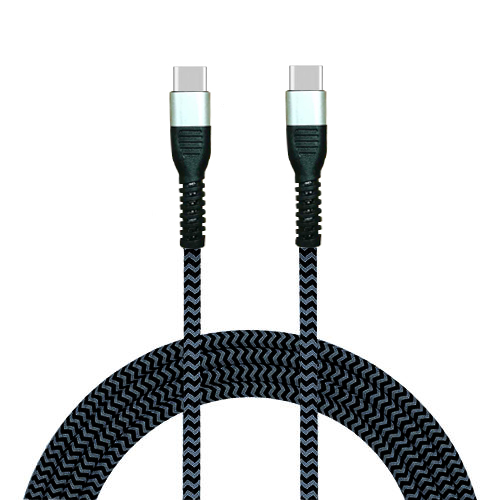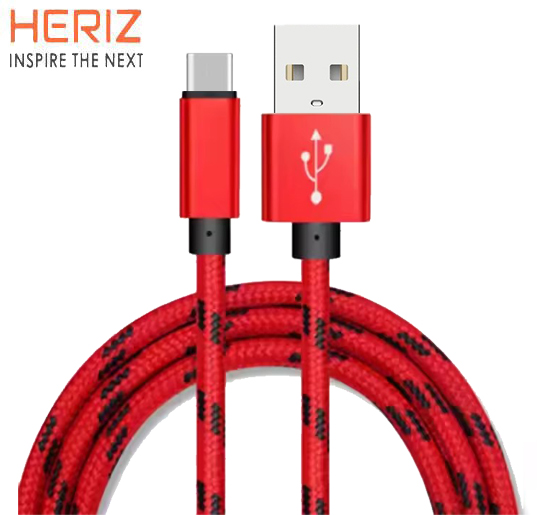Fast charging technology breaks through one hundred watts, industry standard formulation has become the focus
Fast charging technology breaks through one hundred watts, industry standard formulation has become the focus
From 18W to 125W, it only took two years. In order not to spend more waiting time on charging, the "radical" of Chinese mobile phone manufacturers appears to be extremely synchronized with the development of the communications era.
 Back in February 2019, Lei Jun, the founder and chairman of Xiaomi Technology, threw the concept of 100W fast charging on Weibo. This is no different from a blockbuster in the era of 50W mobile phone charging power, but it is trapped by special adapters and The commercial use of 100W fast charging has been temporarily shelved for issues such as battery loss and heat generation, but the research and development of fast charging technology has not stopped, and the development speed has far exceeded people's estimates. On July 13, iQOO released FlashCharge 120W ultra-fast flash charging technology. Two days later, OPPO superVOOC 125W super flash charging technology, and Xiaomi’s 100W fast charging source adapter has also obtained 3C certification. It is expected that the 100W fast charging technology will also be launched in August. This is how domestic head manufacturers are speeding up fast charging technology. Up. In an era when Samsung, Apple and other manufacturers still use 25W and 18W charging technologies, Chinese mobile phone companies with more than 100W fast charging have successively launched, allowing the public to see the domestic mobile phone market’s research and development capabilities in vertical fields. The fast charging technology competition is becoming more and more fierce. Further promote the development of the mobile phone industry.
Back in February 2019, Lei Jun, the founder and chairman of Xiaomi Technology, threw the concept of 100W fast charging on Weibo. This is no different from a blockbuster in the era of 50W mobile phone charging power, but it is trapped by special adapters and The commercial use of 100W fast charging has been temporarily shelved for issues such as battery loss and heat generation, but the research and development of fast charging technology has not stopped, and the development speed has far exceeded people's estimates. On July 13, iQOO released FlashCharge 120W ultra-fast flash charging technology. Two days later, OPPO superVOOC 125W super flash charging technology, and Xiaomi’s 100W fast charging source adapter has also obtained 3C certification. It is expected that the 100W fast charging technology will also be launched in August. This is how domestic head manufacturers are speeding up fast charging technology. Up. In an era when Samsung, Apple and other manufacturers still use 25W and 18W charging technologies, Chinese mobile phone companies with more than 100W fast charging have successively launched, allowing the public to see the domestic mobile phone market’s research and development capabilities in vertical fields. The fast charging technology competition is becoming more and more fierce. Further promote the development of the mobile phone industry.
Breakthrough-the origin of fast charging

In 2014, trapped in the background that the MicroUSB 2.0 current was up to 2A at that time, Qualcomm overturned the Quick Charge 1.0 strategy and adopted a high-voltage fast charging solution. By increasing the voltage, the charging speed was increased, and Quick Charge 2.0 was launched. . At this time, OPPO also innovatively introduced a VOOC flash charging solution. By changing the electric shock and internal cables in the MicroUSB data cable, the circuit was reconstructed from scratch, and the special OPPO data cable was manufactured to achieve the effect of fast charging. Although the charging speed is accelerating, there are still deficiencies such as high manufacturing costs and decreased battery life. Fortunately, the first generation of VOOC relied on the 5V/5A 25W super power, so that OPPO mobile phones can be extremely fast at charging speed, making other mobile phones difficult to beat. The most classic advertising slogan "charge for five minutes, talk for two hours" is also the result Come.
The two schemes, high-voltage fast charging led by Qualcomm QC2.0 and low-voltage high-current fast charging led by OPPO VOOC, greatly improved the charging speed, but they were not promoted rapidly due to the limited micro USB interface problem at that time. The advent of fast charging era really began with the advent of Type-C data line. With the advantages of supporting positive and negative plug and plug compatibility, USB 3.1 standard, supporting the fastest 10Gbit/s transmission and USB Power Delivery protocol, and supporting the maximum 5A current and 100W Power, the development of fast charging technology has been accelerated. Mediatek Pump Express (PE), Meizu mCharge, Pump Express Plus (PEP), Huawei early Fast Charge Protocol (FSP) and other Fast charging technologies are all high voltage Fast charging solutions in this period. However, due to the high cost, the low voltage high current is not as popular as the high voltage quick charge scheme.In 2016, with the full adoption of The Type C interface in Android phones, various phone manufacturers began to use low-voltage and large-current fast charging schemes, resulting in Huawei's SuperCharge (SCP), Mediatek Pump Express 3.0, Meizu Super mCharge and mCharge4.0, which are compatible with PD and Qualcomm QC protocols. However, Qualcomm also found the advantage of low-voltage scheme and added low-voltage large current to QC4.0 fast charging protocol, that is, it supports both high-voltage quick charging scheme and low-voltage large current scheme.Innovation -- Rapid charging technology is further improvedFrom A technical point of view, whether it's OPPO super flash charging technology, or iQOO super flash charging technology using the charge pump, 125 w super flash technology USES 98% conversion efficiency of three charge pump in parallel scheme, the principle of which is the charger output 20 v 6.25 A power after three parallel charge pump step-down into 10 v 12.5 A into cells, each charge pump is only 20 v 2.1 A need to transform about 42 w power, effectively avoid the large current caused by the charge pump overload, overheating; IQOO 120W FlashCharge technology is the battery scheme of "double cell in series" with 97% conversion efficiency. After entering the mobile phone through the 20V 6A charger, it is divided into two channels 20V 3A, and then each USES a charge pump to output 10V 6A at partial voltage. Finally, it is combined into 10V 12A for high-pressure direct charging of two strings of cells.Charge pump fast charging technology is simply through the unique "half voltage scheme", the high voltage low current signal into a low voltage high current signal to transmit to the battery, so as to achieve high voltage direct charging fast charging. The higher the efficiency is, the lower the charger temperature can be controlled. The charger temperature determines the running time of fast charging under high power. In fact, charge pump is not rare in fast charge technology, many in the market have adopted this technology.IQOO 120W FlashCharge super flash charging technology debuts 6C cell, which can convert 20V 6A to 5V 12A current. And OPPO 125 w super flash technology input current from the previous generation SuperVOOC increased to 12.5 A, 6.5 A battery specification will need batteries to upgrade to the inflation rate higher double 6 c batteries, battery technology by extremely ears set (MMT), upgraded to A multipolar ear (MTW) per shipment process, because the batteries of each level has positive and negative charge multiplying the motion path of shortened, batteries impedance further reduce, effectively reduce the battery charging fever,Besides, OPPO on the basis of the original four temperature sensor (three mobile phone, charger), mobile terminal 10 new temperature sensor, real-time monitoring, charging temperature monitoring and provide far more than ever even play games while charging, also can quickly adjust real-time charging power, to control the charging time and the highest temperature of 40 ℃, reduce fever, avoid charging exception; The iQOO charger has two temperature sensors inside, which can transmit the temperature information of the charger to the phone through the data line. The charging power can be controlled through the temperature to ensure the safe and low temperature of the phone during use.
Compatibility - Fast charging industry standards is around the corner

Whether it is OPPO and iQOO, which have just released new fast charging technology, or mobile phone enterprises which are about to launch high-power fast charging in succession, faster and faster charging speed has become the future development trend, and people will pay more attention to the safety issues in charging. Although type-C charging cables are used, each manufacturer has different charging heads, charging cables and supported charging protocols. If they cannot be matched at the same time, they can only be used as ordinary chargers even if they buy fast charging cables and correct USB data cables. When can get through fast charging, a charging head or a set of fast charging scheme can adapt to different brands become the most concerned issue.As the creator of low-voltage high-current mobile phone rapid charging technology, OPPO has been working hard to promote the process of compatibility protocols and actively participated in the formulation of industry standards for fast charging. Zhang Jialiang, chief scientist of OPPO Flash Charger, said in an interview, "With the gradual increase of power, the basic threshold of fast charging will be higher and higher, but compatibility is the big trend in the future. The unified industry standard of fast charging will make it more convenient for consumers, and also contribute to energy conservation and emission reduction. This is the demand of OPPO, and we believe that compatibility will be around the corner."In order to avoid security problems, OPPO introduced 128-bit exclusive encryption algorithm to fully reduce security risks. Only when e-marker cable encryption information is identified can the charging current reach 6.25A, effectively reducing security problems arising from different charging protocols, charging heads and charging lines.More than 5 g for all mutual melting scene using led to a more rich scene, which greatly improved the output energy consumption demand, range of mobile phones and charging puts forward new requirements, quick charge faster will become the mainstream trends of mobile phone industry, once upon a time a night can be filled with mobile phones to the age of the past, wash ten minutes to complete charging will become a reality. In the 5G era, mobile phone manufacturers will face more opportunities and challenges at the same time. In order to avoid homogenization, innovation will become the focus of each company.
Recommended Products
Similar article ranking
- Welcome to visit our Booth Hall: 10.1 Stand: 119 Date: 3-5th Sept
- HERIZ Hong Kong Consumer Electronics Show
- Heriz 2019 work summary
- Tens of millions lost with the wrong data cable!
- What exactly is Type-C? ----- ACHLing takes you to understand
- Tencent shot, it’s time to give a lesson to the United States!
- How do data cable manufacturers get through the Dragon Boat Festival?
- USB-C is so popular that more than half of mobile phones will be used this year.
- Apple has released a woven data cable. Would you buy it at this price?
- Fast charging technology breaks through one hundred watts, industry standard formulation has become the focus
Latest news articles
- Follow ACHLink to understand USB version and interface type naming
- Danger! ACHLink reminds you that the old data cables at home must be replaced!
- Welcome to visit our Booth Hall: 10.1 Stand: 119 Date: 3-5th Sept
- The difference between OTG data cable and regular USB data cable
- How much do you know about PD fast charging lines? Compared to regular data cables, what are they?
- What are the advantages and features of a USB data cable
- How to Protect and Maintain iPhone Data Cables
- Apple requires that the iPhone 15 data line still needs authorization verification
- Hazards and causes of unqualified external insulation of electronic wires
- Why is it slow to charge with the 2A mobile phone data cable? How to increase the charging rate of mobile phone [detailed explanation]
- 8.8 How about the data cable for parcel post?
- Advantages and Four Precautions of ACHLINK Gift Data Line Customization
- Why is the charging speed different for mobile phone chargers with different data cables?
- Advantages and disadvantages of spring pin connector
- ACHLINK 100W / 66W type-C to C data cable
- Nylon Braided type-C to C data cable, 100W high-power fast charging cable
- 100W USB C data charging cable and common plug are easy to rust
- What is the difference between audio cable and audio cable?
- What kind of mobile phone is the type-C data cable suitable for? Can I charge Huawei?
- Why can’t we live without electronic wires






